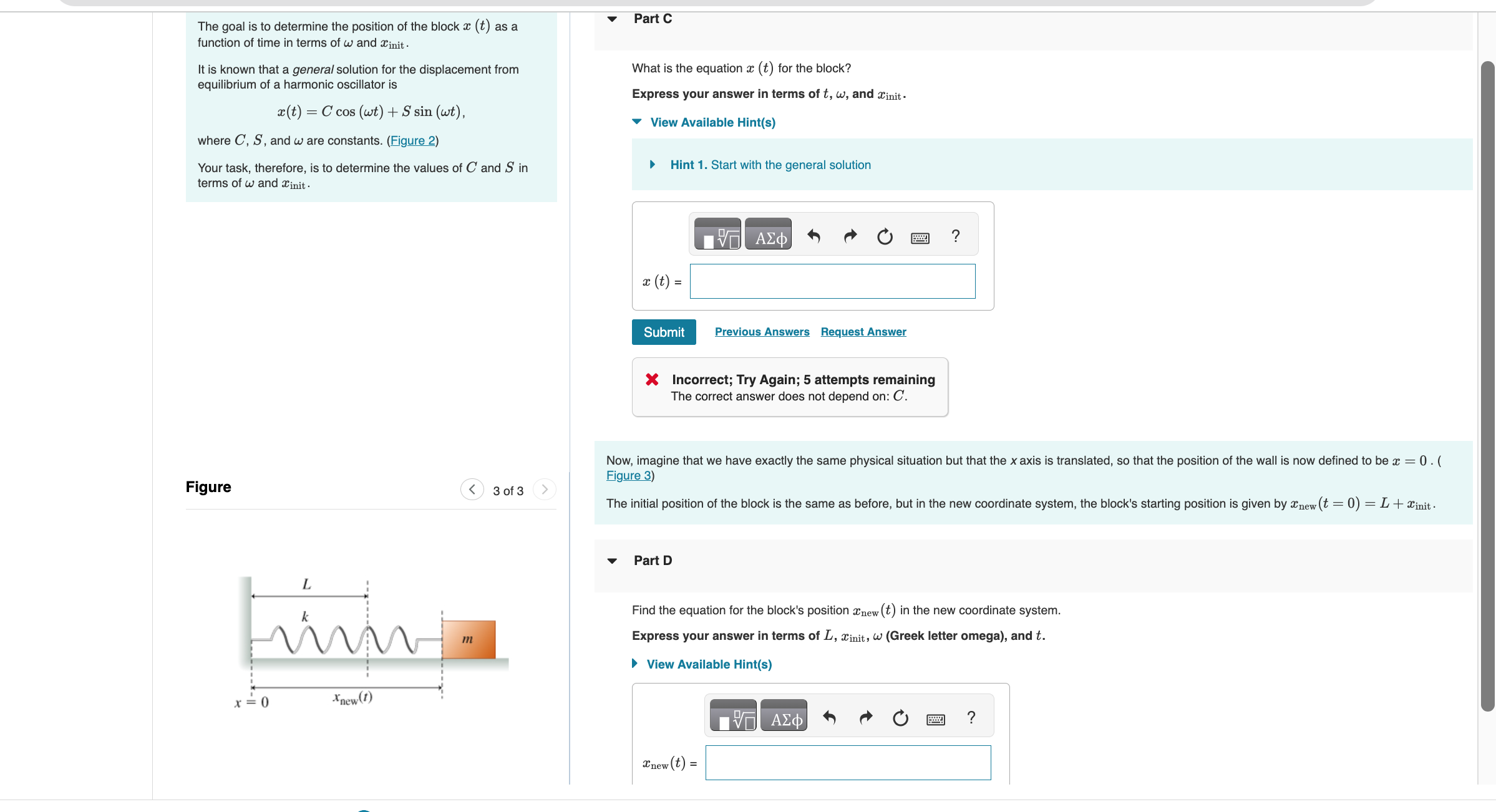Answered step by step
Verified Expert Solution
Question
1 Approved Answer
Part D Find the equation for the block's position xnew ( t ) in the new coordinate system. Express your answer in terms of L
Part D
Find the equation for the block's position xnewt
in the new coordinate system.
Express your answer in terms of L
xinit
omega
Greek letter omega and t
Part C
What is the equation xt
for the block?
Express your answer in terms of t
omega
and xinit
Learning Goal:
To understand the application of the general harmonic equation to the kinematics of a spring oscillator.
One end of a spring with spring constant k
is attached to the wall. The other end is attached to a block of mass m
The block rests on a frictionless horizontal surface. The equilibrium position of the left side of the block is defined to be x
The length of the relaxed spring is L
Figure
The block is slowly pulled from its equilibrium position to some position xinit
along the x axis. At time t
the block is released with zero initial velocity.
The goal is to determine the position of the block xt
as a function of time in terms of omega
and xinit
It is known that a general solution for the displacement from equilibrium of a harmonic oscillator is
xtCcosomega tSsinomega t
where C
S
and omega
are constants. Figure
Your task, therefore, is to determine the values of C
and S
in terms of omega
and xinit

Step by Step Solution
There are 3 Steps involved in it
Step: 1

Get Instant Access to Expert-Tailored Solutions
See step-by-step solutions with expert insights and AI powered tools for academic success
Step: 2

Step: 3

Ace Your Homework with AI
Get the answers you need in no time with our AI-driven, step-by-step assistance
Get Started


